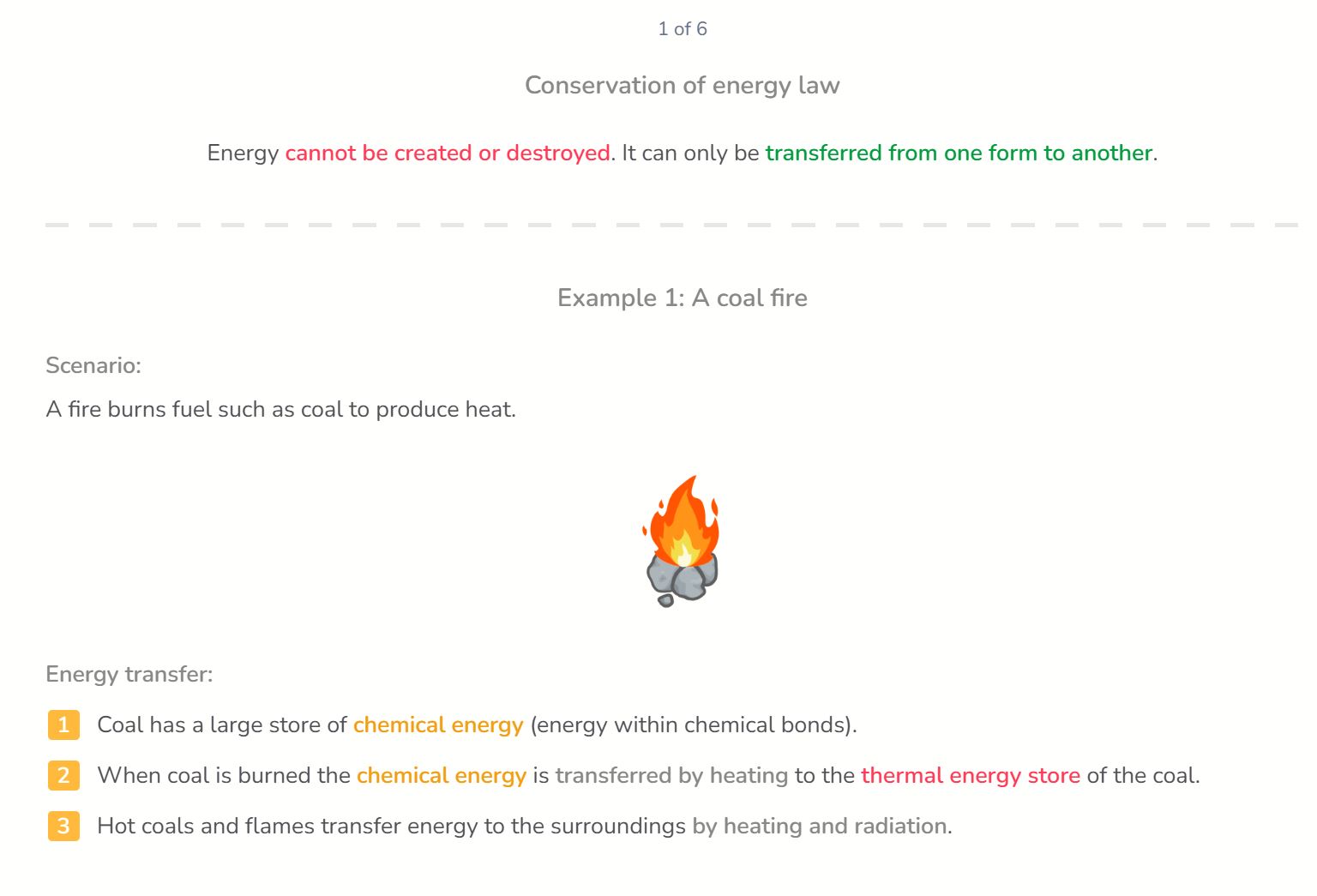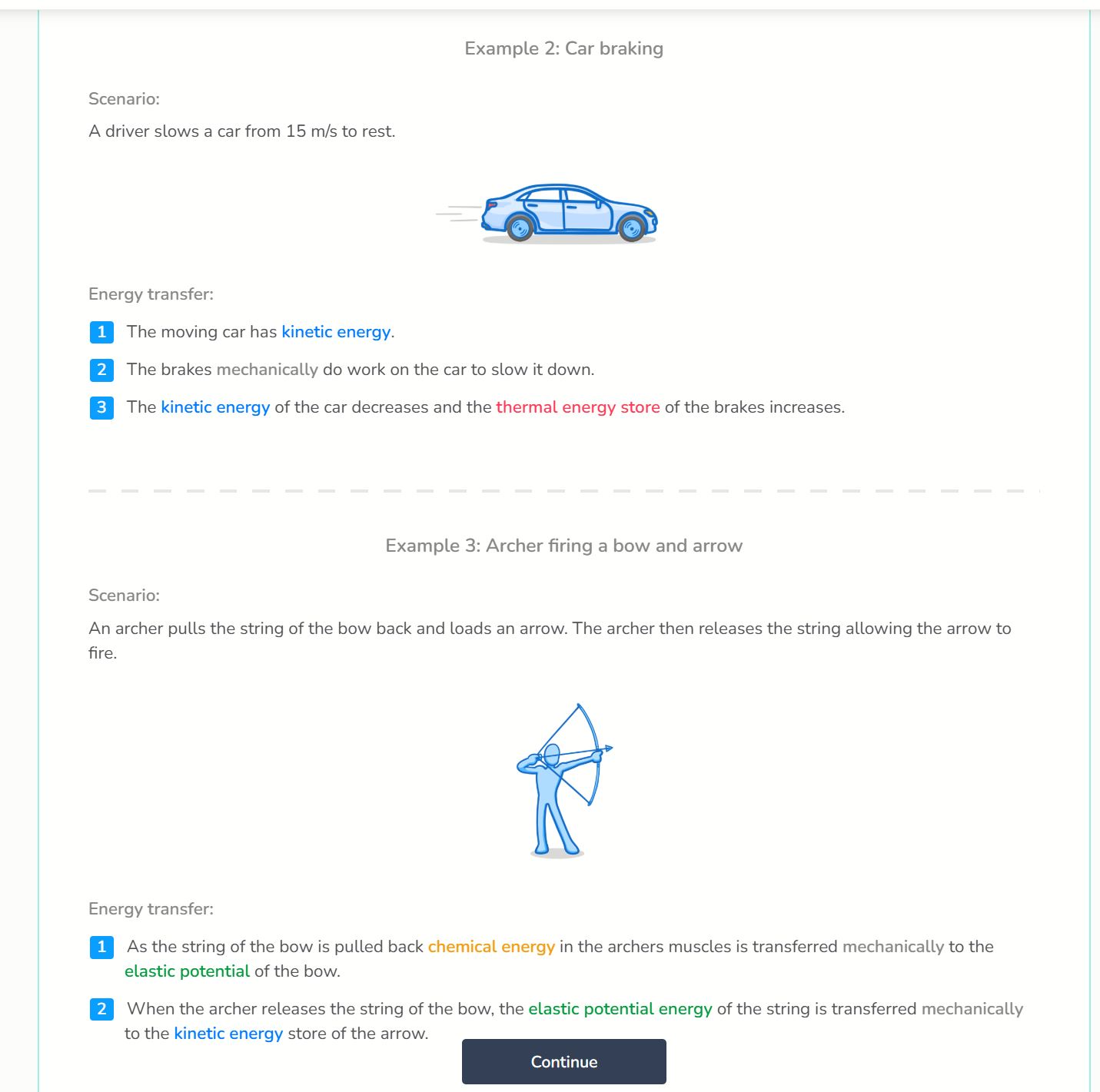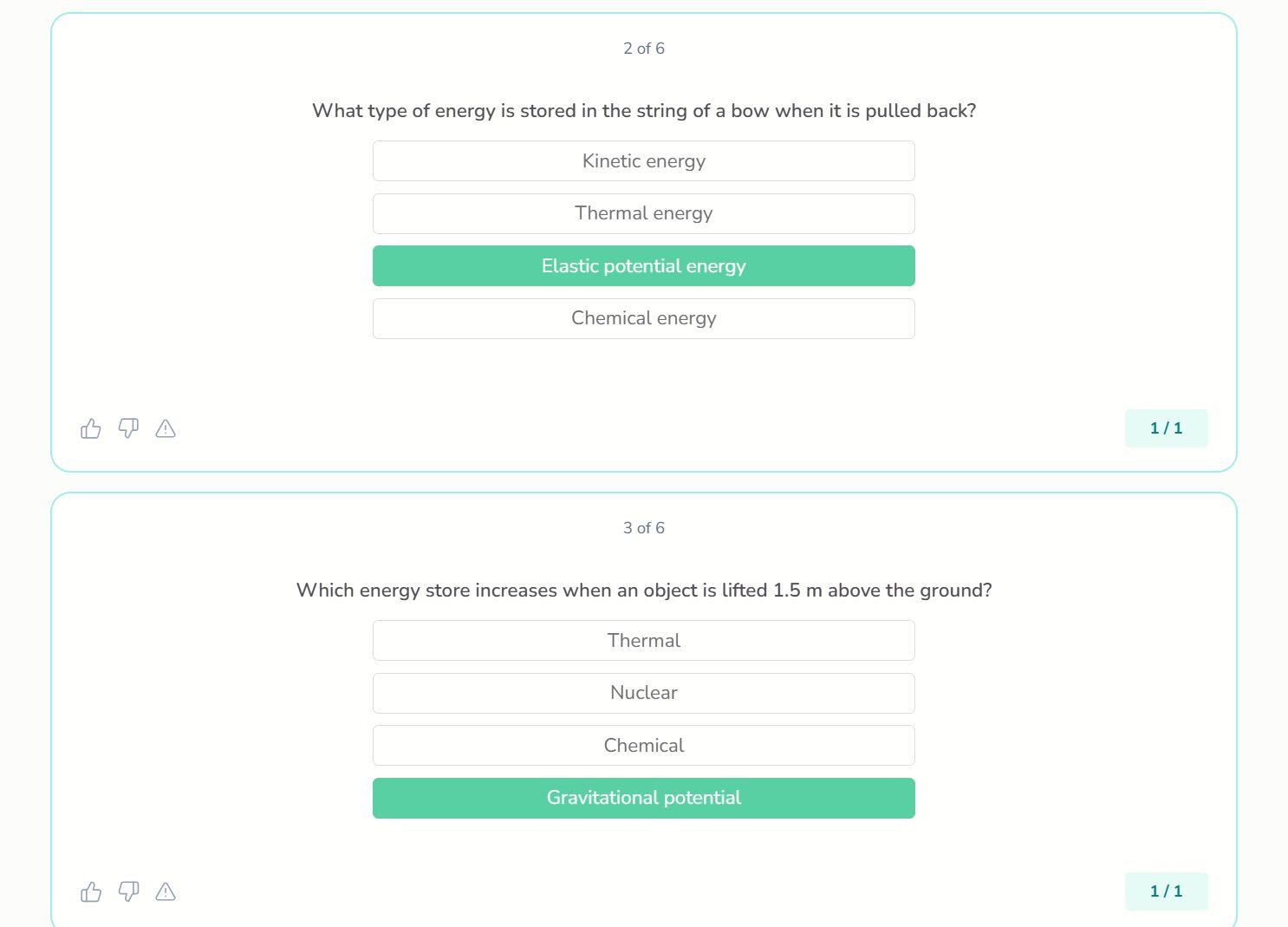Energy Transfer and Stores
Energy Conservation and Transfer
Energy is neither created nor destroyed; it is only transferred between forms and objects.
Forms of Energy Stores
Thermal (Internal) Energy: Heat energy within an object related to its temperature.
Kinetic Energy: Energy associated with the motion of an object.
Gravitational Potential Energy: Energy possessed due to an object's position in a gravitational field.
Elastic Potential Energy: Energy stored in a deformed elastic object (e.g., a stretched spring).
Chemical Energy: Energy stored in chemical bonds.
Magnetic Energy: Energy associated with magnetic fields.
Electrostatic Energy: Energy associated with electric charges.
Nuclear Energy: Energy released from breaking apart atoms.
mechanical energy :Mechanical energy refers to the energy an object possesses due to its motion (kinetic energy) or its position (potential energy).
Energy Transfer Mechanisms
Energy can be transferred between stores mechanically (e.g., stretching an elastic band), electrically (e.g., plugging into a socket), by heating, or by radiation (e.g., light or sound waves).
Systems: Open vs. Closed
System: A specific object or group of objects being considered.
Open System: A system that can exchange energy and matter with the outside world.
An open system can either gain or lose energy through interaction with its surrounding environment.
Closed System: A system isolated from the outside world, where neither matter nor energy can enter or leave.
The overall change in energy in a closed system is always zero, even though energy transfers can occur within the system.
Examples of Energy Transfer
Kettle Example:
Electrical energy flows from the socket to the kettle's heating element.
This Electrical energy is transferred electrically to the thermal energy store of the kettle's heating element.
The heating element then transfers energy to the water's thermal energy store, thus heating the water.
Work Done
Another way of saying energy transferred is work done.
Mechanical Work: Using a force to move an object (e.g., kicking a ball).
Example: Kicking a ball transfers chemical energy from your leg to the kinetic energy of the ball.
Electrical Work: The energy required to overcome resistance when current flows in a circuit.
Practical Illustration: Train Braking
Scenario: A train applies brakes to stop before a broken bridge.
Friction between brakes and wheels does work, slowing the train down.
Kinetic energy from the wheels is transferred to the thermal energy stores of the surroundings as heat.


